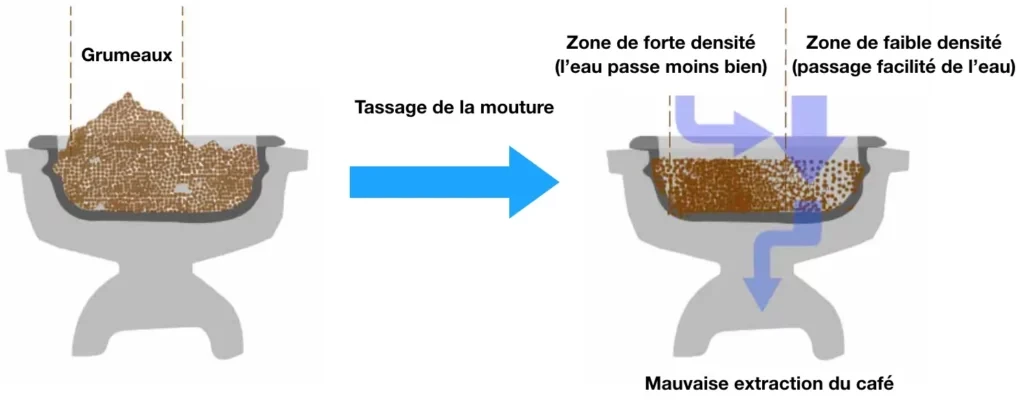Focus on the BPlus Apollo Coffee Grinder

Discover the Apollo coffee grinder from BPlus, a remarkable creation by Arthur, the brand’s founder, which will delight coffee enthusiasts. In this article, I share my experience and recent impressions of this iconic model, while comparing it to the Kinu M47 Classic. Immerse yourself in the world of coffee and learn what sets the Apollo apart from other grinders on the market.
My Apollo coffee grinder from BPlus has been with me almost since the creation of my first coffee blog: coffeegeek.co. At that time, I had written an article comparing it to the Kinu M47 Classic in this article.
Today, after trying a large number of coffee grinders, some of which I’ve presented to you throughout my articles, I want to retest and update my impressions of the Apollo from BPlus.
Bplus: The Mastermind Behind the Apollo
The Apollo coffee grinder was imagined, designed and manufactured by Arthur, the founder of BPlus. Originally from Taiwan, Arthur is a coffee enthusiast, both a roaster and inventor. Within his company, several innovative projects have emerged, often directly related to La Pavoni machines, for which he represents the brand in Asia.
During one of his travels, he was inspired by a column from a Roman temple to imagine his grinder. At the time, when I saw the photos on social media, I fell in love with this grinder. Thus, I was able to acquire it quite quickly after it became available and compare it to the Kinu M47 Classic that I owned at that time.
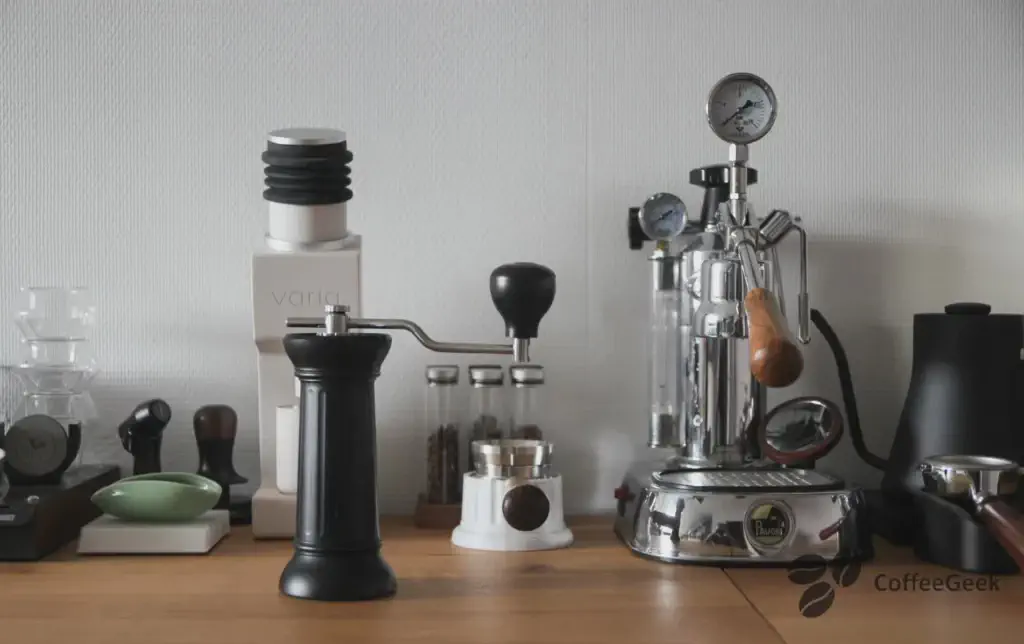
I didn’t know it yet at that moment, but my article comparing the Kinu M47 Classic and the BPlus Apollo made quite a stir on the Internet. Indeed, Kinu has some kind of “fan boys” who claimed that BPlus had completely copied the Kinu M47, which was not the case at all. My article, with its point-by-point comparison of the two grinders, happened to demonstrate this.
The unique style of the Apollo coffee grinder
Unlike what can be found among competitors (Timemore, 1Zpresso, Kingrinder…), who offer grinders made of several elements assembled together, the Apollo is so to speak carved from solid mass using a CNC machine. Thus, when you hold the Apollo coffee grinder, it is heavy and you have a feeling of solidity when handling it. I’ve owned it for several years and I never get tired of it.
Personally, I have the black model. But there are other colors available.
But let’s come back a bit more to the details that make this grinder totally unique in my eyes. In fact, when I’m not using it, it also serves as decoration.
The handle
This grinder’s handle is not retractable and the knob is large, made of metal, offering an excellent grip. I insist on this point because I have tested the coffee grinder from MHW 3Bomber, Kinu or even the Timemore S3, which offer a much smaller handle knob. Personally, I find that the grip is less pleasant when the latter is too small.
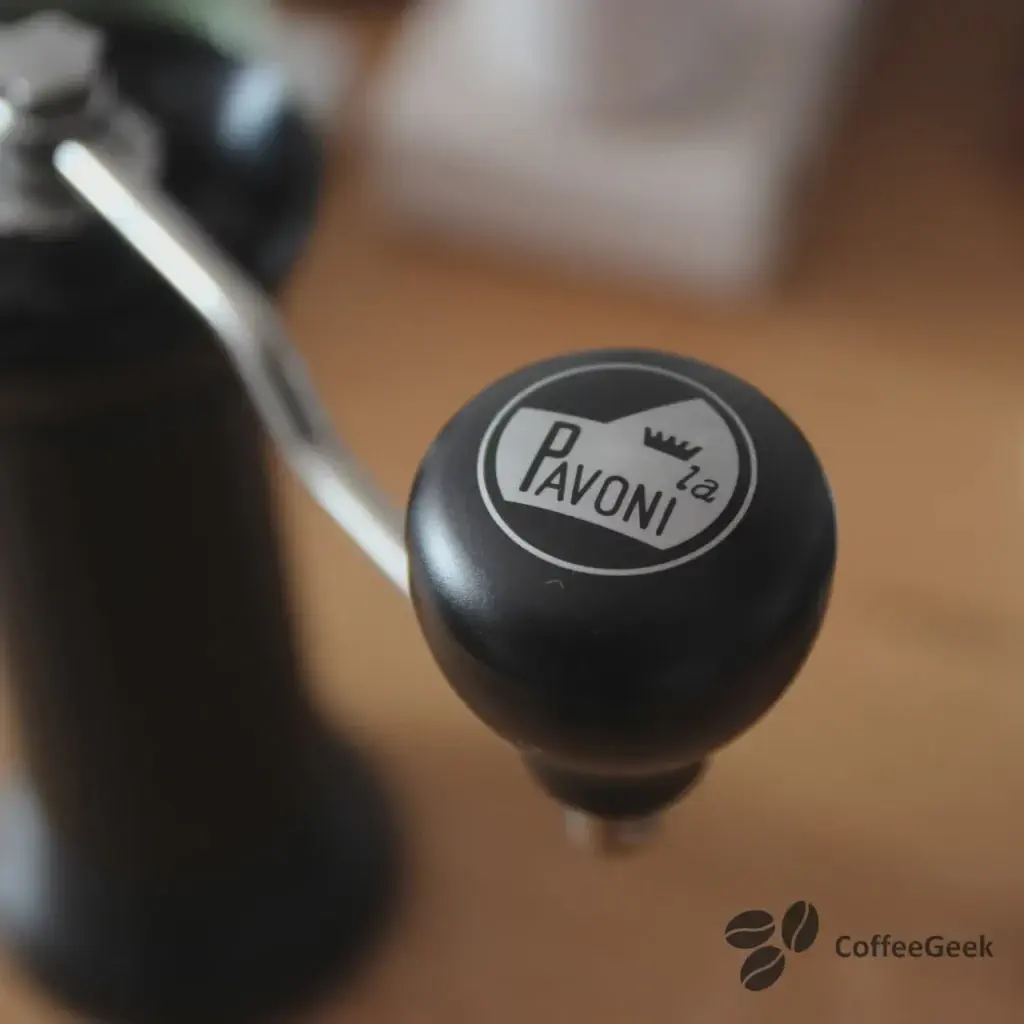
A laser engraving “La Pavoni” recalls the connection between BPlus and La Pavoni.
The adjustment dial
The adjustment dial is located at the top of the grinder, at the level where the handle attaches to the shaft that rotates the moving part of the burrs. It’s a dial that allows very precise adjustment of the grind. I’ve never felt, during use, that the ideal setting falls between two clicks.
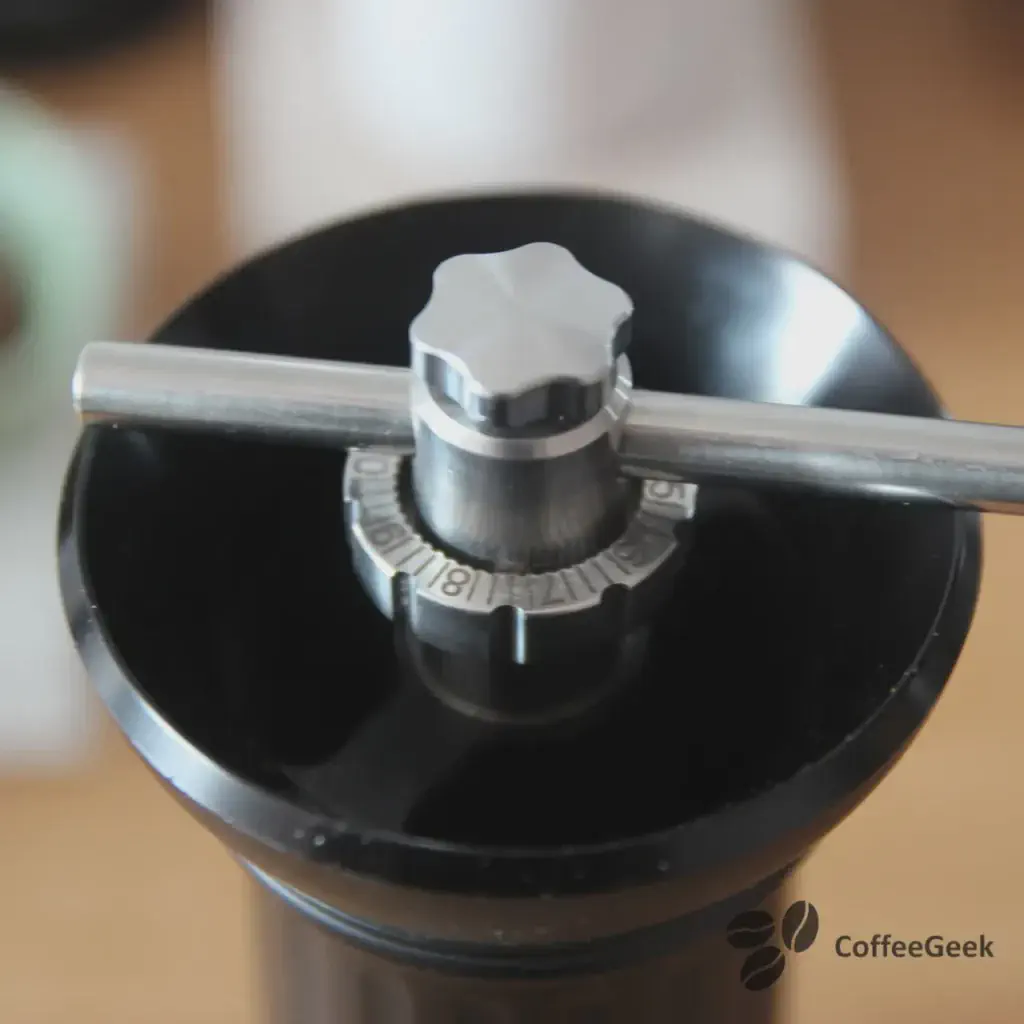
In fact, the majority of coffee grinders that adjust from the top (with rare exceptions, like the Timemore S3) allow fine enough adjustment for espresso extraction. Other criteria, such as the shape of the burrs, also influence the quality of the grind.
Conversely, grinders whose adjustment is located underneath offer less fine adjustment with a larger gap between the burrs at each click. For example, during my test of the El Commandante C40, I found it to be unconvincing for espresso extraction. In use, I found myself several times with the ideal setting falling between each click.
Thus, generally speaking, grinders that adjust from below are better suited for slow extractions with coarse grinds, while grinders that adjust from the top are intended for espresso-type extractions.
The cap
While most coffee grinders currently offered on the market feature a removable handle, attached to the cap, here with the Apollo, we have a non-detachable handle, with a silicone cap to be placed before use.
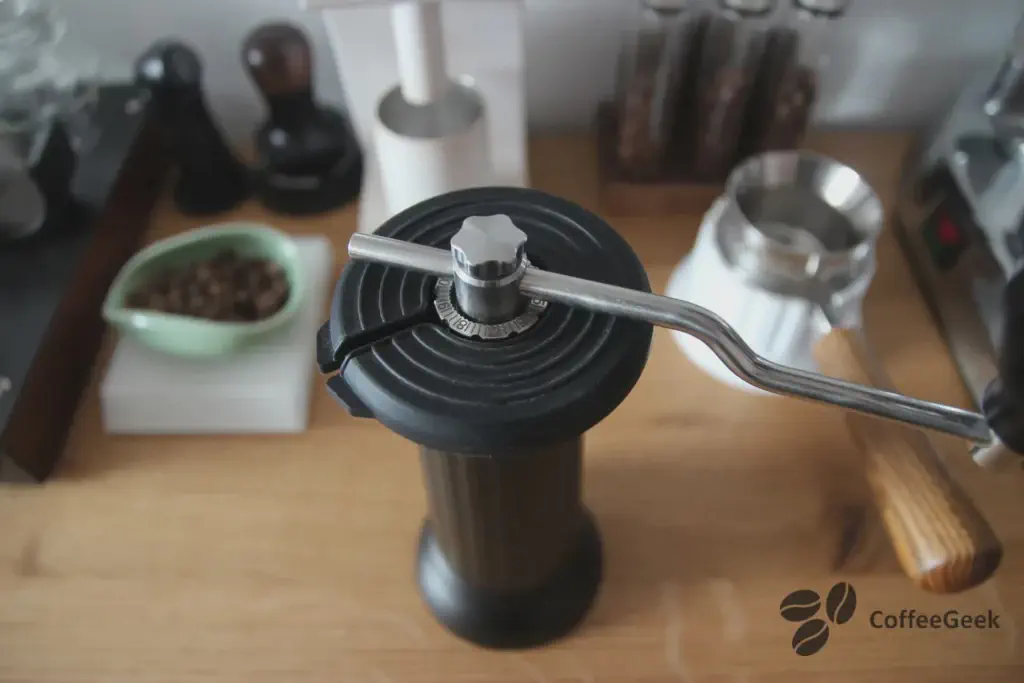
We can of course use the grinder without the cap, but coffee bean pieces may escape. Personally, I prefer to use the cap provided by BPlus even though I find that it doesn’t match well with the coffee grinder’s design.
The body of the Apollo coffee grinder
I already mentioned in the introduction of this article that the grinder was strongly inspired by a column from a Roman temple. Thus, this grinder evokes Italy, the land of espresso and coffee.
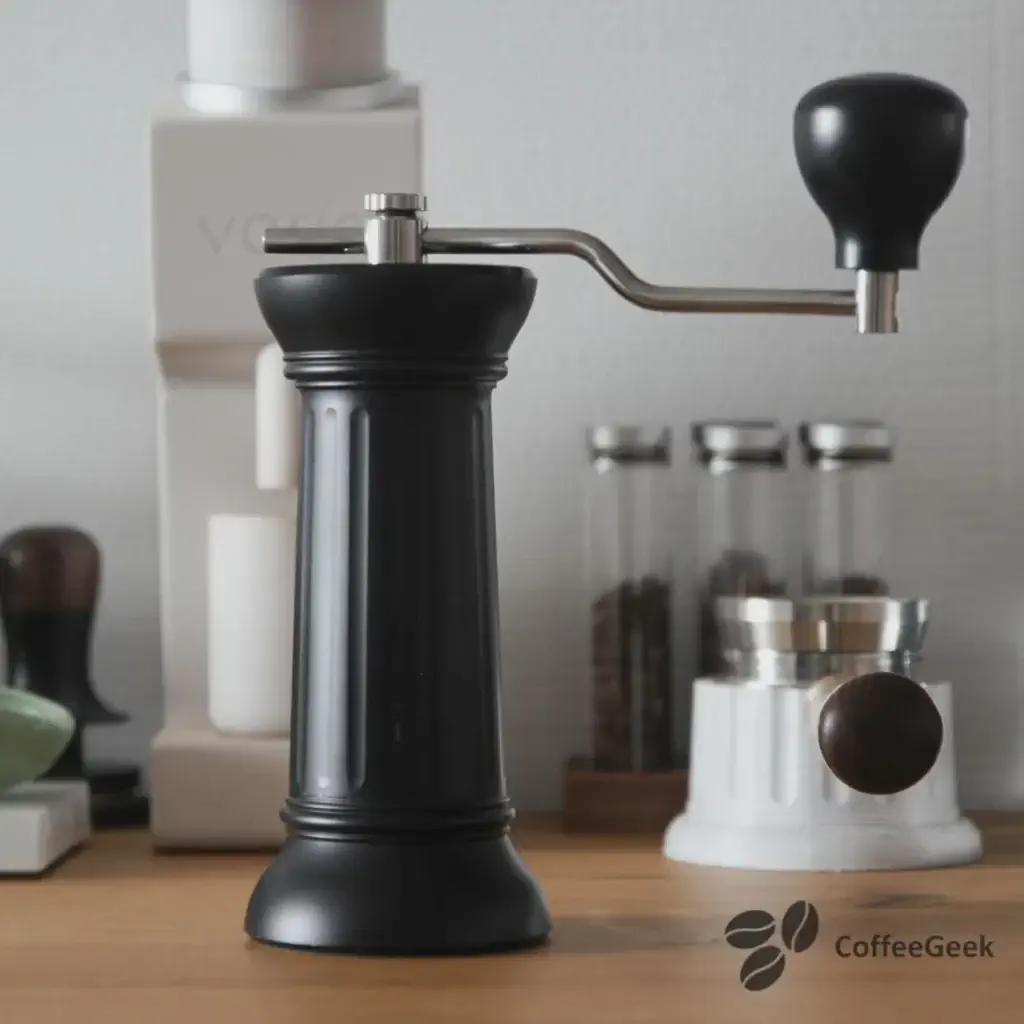
I don’t know how much it costs to produce a single one of these grinders, but the fact that it is machined from solid material by a CNC machine takes a lot of time. Some time ago, I had a conversation with Arthur and I questioned him a bit on this subject. Apparently, he sells the Apollo practically at cost. This means he continues to produce this coffee grinder essentially out of passion rather than seeking profit. This is also why his coffee grinders are often out of stock.
Anyway, back to the point. The fact that the grinder’s body is narrower at the top but ends with a funnel has a double advantage. The funnel helps pour the coffee into the grinder while preventing the grinder from slipping during use.
The Apollo’s burr
The Apollo’s burr is manufactured by the Italian manufacturer Itamil. It’s the same burr found in Kinu grinders and some 1Zpresso models, and probably in other grinder brands. This burr delivers an excellent cup result for espresso extractions. It has a diameter of 47 mm and is made from an extremely hard alloy, which gives it significant longevity. Since I’ve owned this grinder (since mid-2018), I’ve put kg of coffee through it without observing any signs of wear. Additionally, since the grinder can be disassembled, it will be easy to replace the burrs if needed.
The container
The container is also machined from solid material. It’s quite heavy, with a low center of gravity and a wide base, which allows the grinder to remain very stable on the countertop.
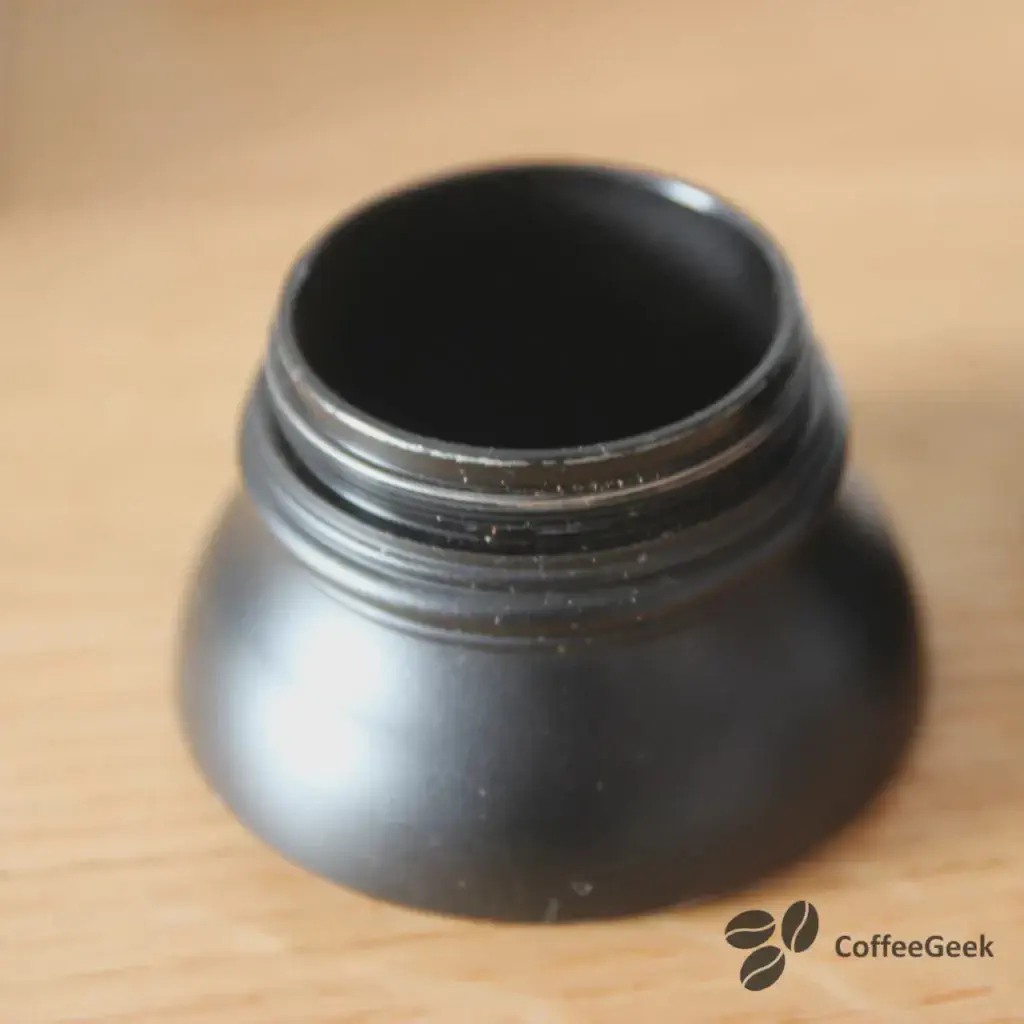
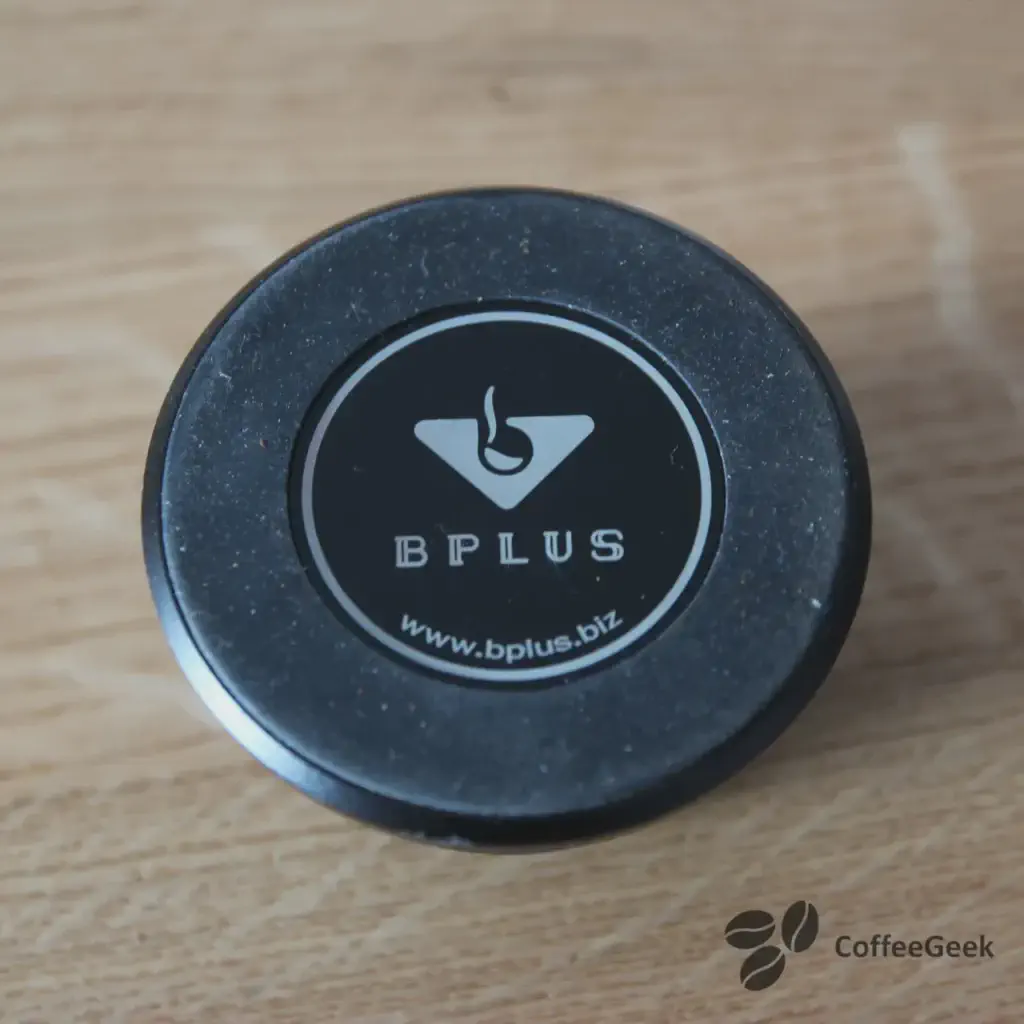
The inside of the container is very straight. There’s no ledge that could retain coffee, as I’ve observed on other coffee grinders. Also, the container is 58 mm wide, making it directly compatible with most baskets (it’s the standard professional size). Finally, it attaches to the base by screwing it on. The threading is much finer than what you find for example on the Kingrinder. I had concerns at first about damaging the threading. But, I’ve owned this grinder since 2018, I’ve used it many times and I haven’t had any problems in this regard.
Under the container, there’s rubber to avoid damaging the countertop.
Espresso Extraction with the BPlus Apollo and La Pavoni
Preparing espresso coffee with a La Pavoni was covered in detail in the following article. Therefore, some steps will be skipped in order to focus on the coffee grinder.
Les Secrets d'Utilisation de la La Pavoni à Levier
Perfectionnez votre maîtrise de l'espresso grâce à la machine à levier La Pavoni. Cet article explore les défis que vous pourriez rencontrer au début et propose des solutions pour obtenir un café d'exception. Vous découvrirez également l'importance d'une eau de qualité et de grains fraîchement torréfiés pour sublimer vos préparations. Entraînez-vous et améliorez votre technique afin de transformer chaque tasse en une véritable expérience gustative.
Read more...Tutorial article explaining the general basics for making a successful espresso coffee with a La Pavoni coffee machine
The first step will be to weigh the coffee and then add a few drops of water to the coffee beans before grinding them. This is the RDT technique, which consists of limiting static electricity, an important retention factor.
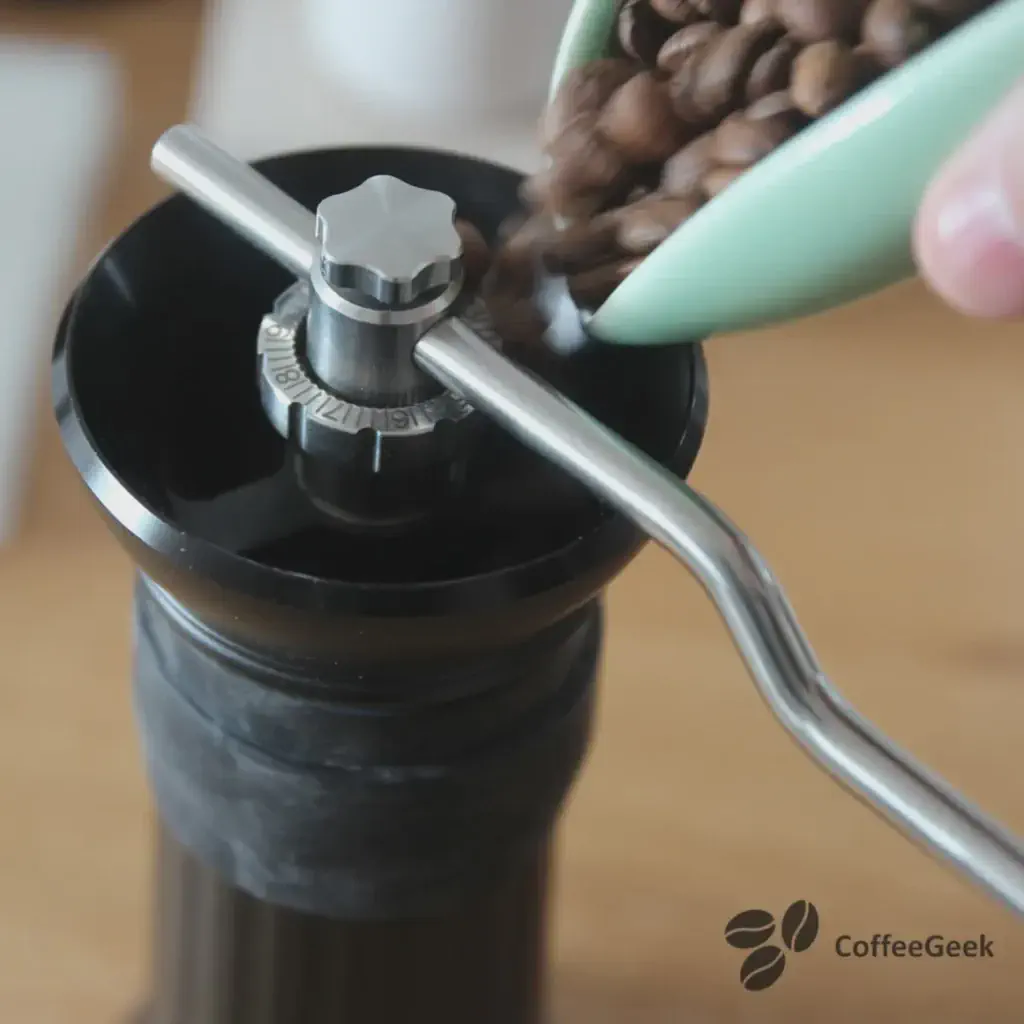
I pour the coffee beans into the grinder. The funnel, an integral part of the grinder’s design, allows you to pour all the beans at once without spilling any.
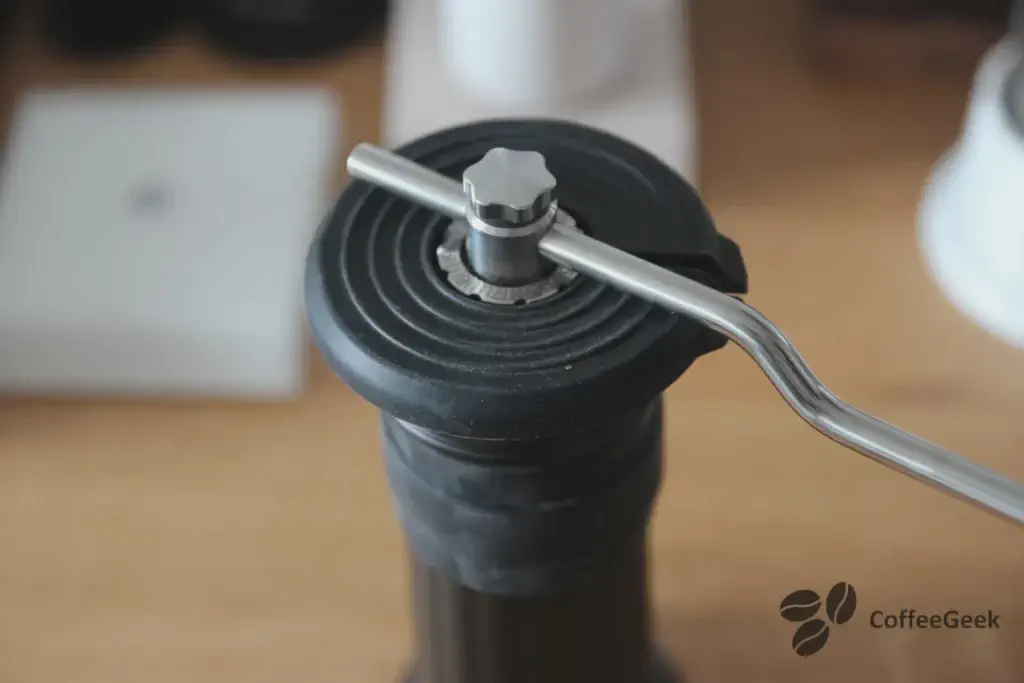
I don’t forget to add the silicone stopper. Adding this stopper is not mandatory but helps prevent coffee beans from escaping when grinding the coffee.
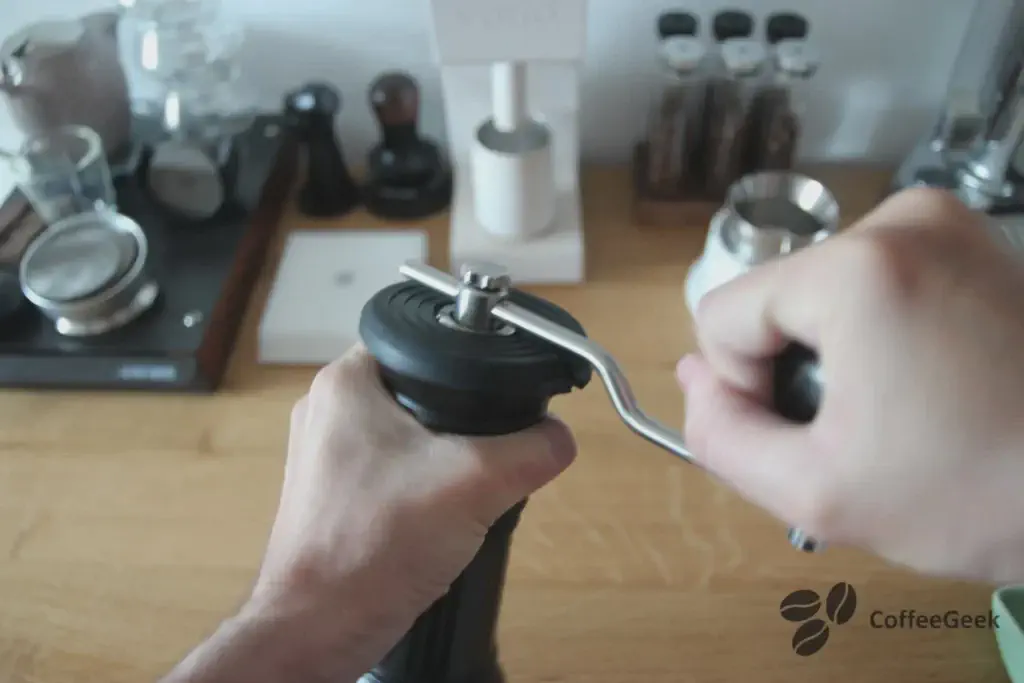
Next, I grind the coffee. Among all the coffee grinders I’ve tried, it’s one of the fastest for grinding the same amount of coffee. This speed generates a certain amount of torque during grinding. BPlus has provided rubber bands to place around the grinder for better grip. These bands make the grinder easier to handle, but they “break” the beauty of the design of the Apollo somewhat.
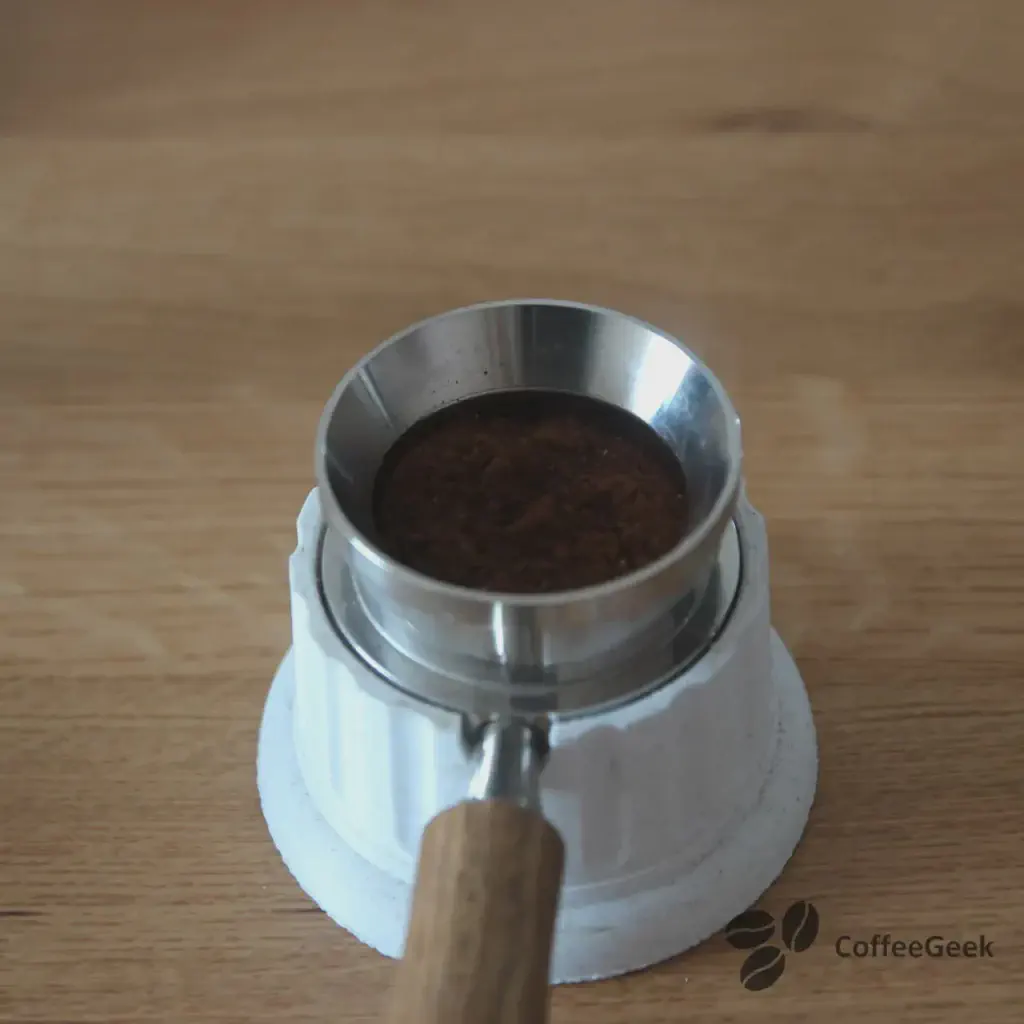
After a few dozen seconds, I’ve finished grinding my coffee. I pour it into the portafilter of the La Pavoni and distribute the coffee using my WDT. This is a very important step in making an espresso, as it helps avoid the phenomenon of channeling.
Tips to avoid channeling
Channeling is a phenomenon of uneven water flow through the coffee grounds. It is therefore an issue only related to espresso extractions. Indeed, water will always take the path of least resistance. Let's discover how to avoid this phenomenon.
Read more...Coffee retention in the Apollo grinder
Now that the coffee is tamped and I’ve placed the puckscreen, I’ll be able to show you the retention of the Apollo. It is extremely low.
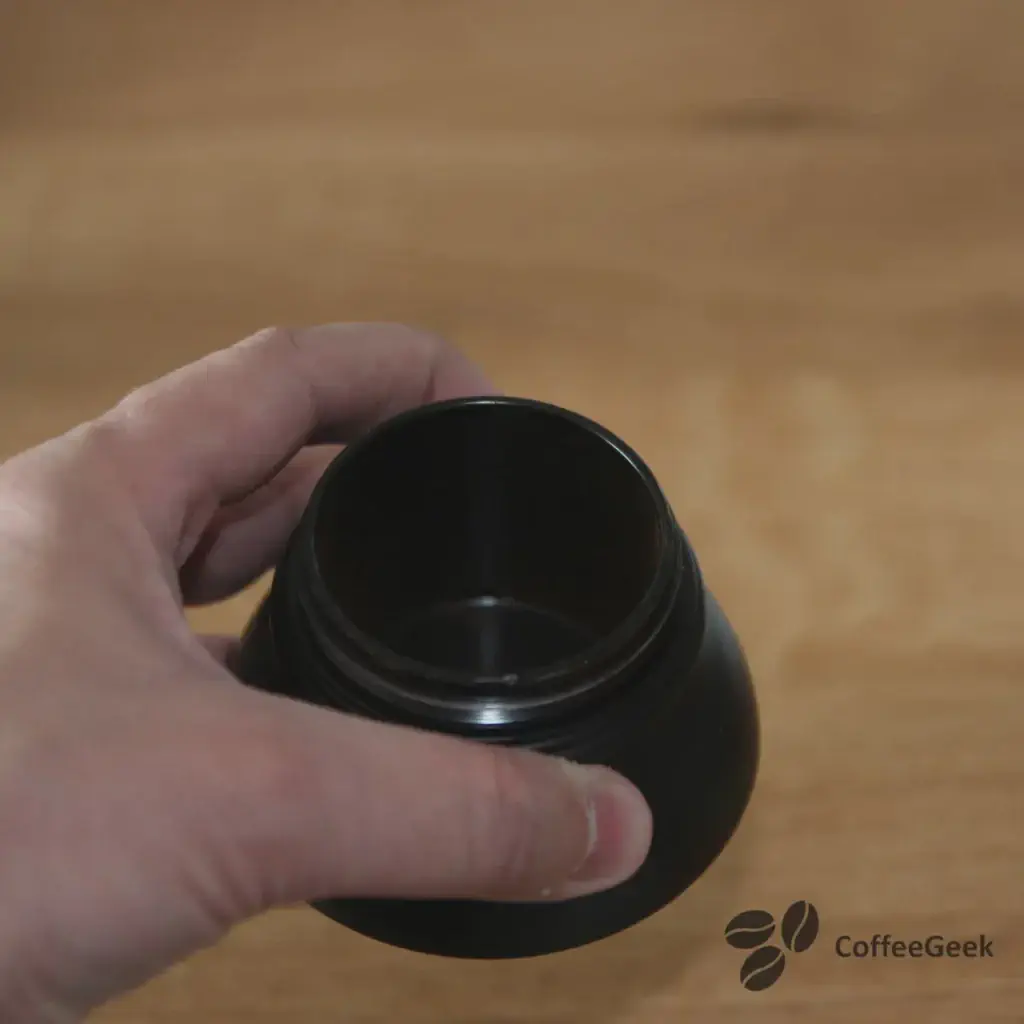
Let’s start with the container. After pouring the coffee into the portafilter, there is nothing left, no coffee, except for a slight powder, which is completely normal.
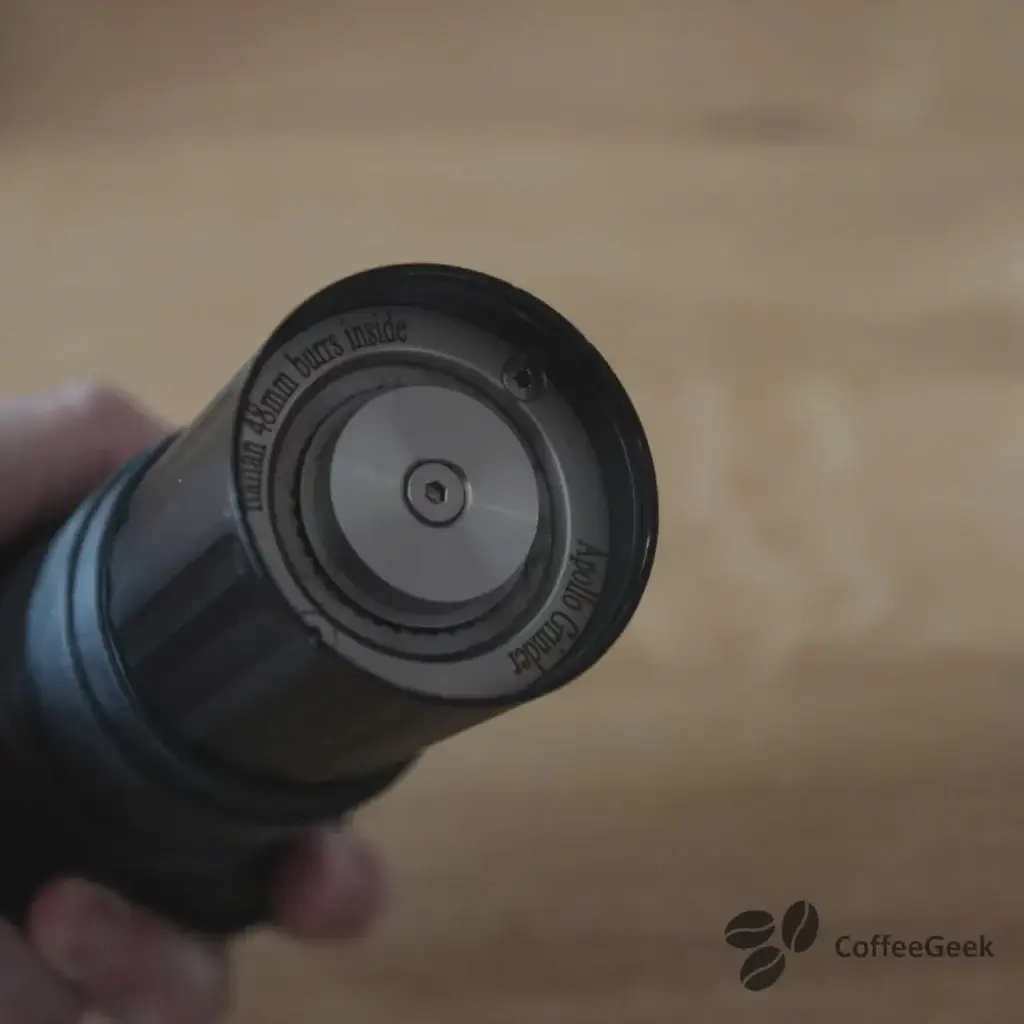
Next, let’s look at the burr exits. These do not show significant retention of coffee.
The low retention of the Apollo coffee grinder is excellent. In truth, several hand grinders have very low coffee retention, particularly at the burr outlet level. Where there can be a difference between coffee grinders is at the container level. Some brands have opted for components or shapes that generate coffee retention. I’m thinking particularly of Kinu which, at the time when I owned it (this may have changed since), had a rim inside the container. This inevitably led to coffee retention.
My espresso prepared with the Apollo grinder from BPlus
And here is the espresso coffee I made with the coffee ground by the Apollo and extracted with my La Pavoni.

Cup illy art collection.
How to disassemble the Apollo grinder?
Unlike some manual coffee grinders available on the market, the Apollo has been designed to be easily disassembled, which allows for easy cleaning. Let’s proceed together with the grinder disassembly:
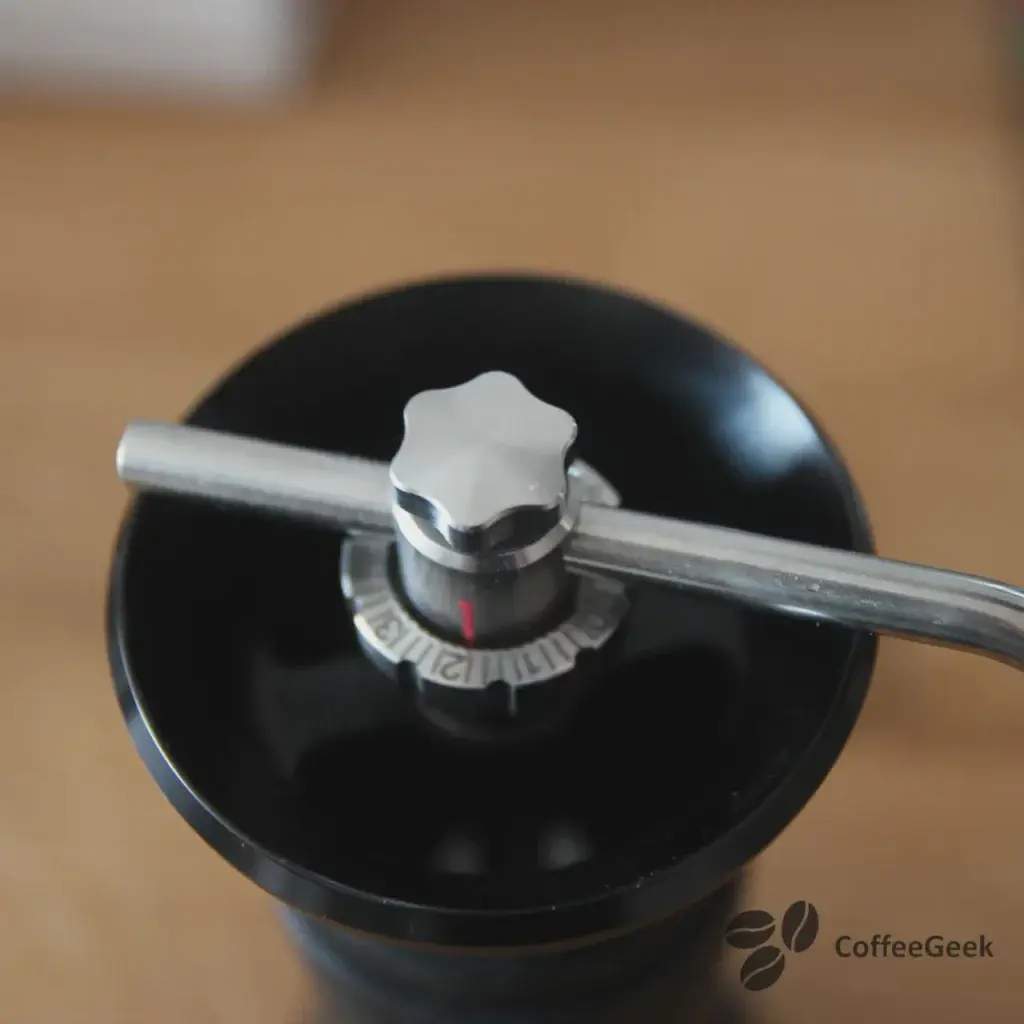
To begin, I recommend that you note the setting of your grinder. Then, unscrew the screw that holds the crank and remove it.
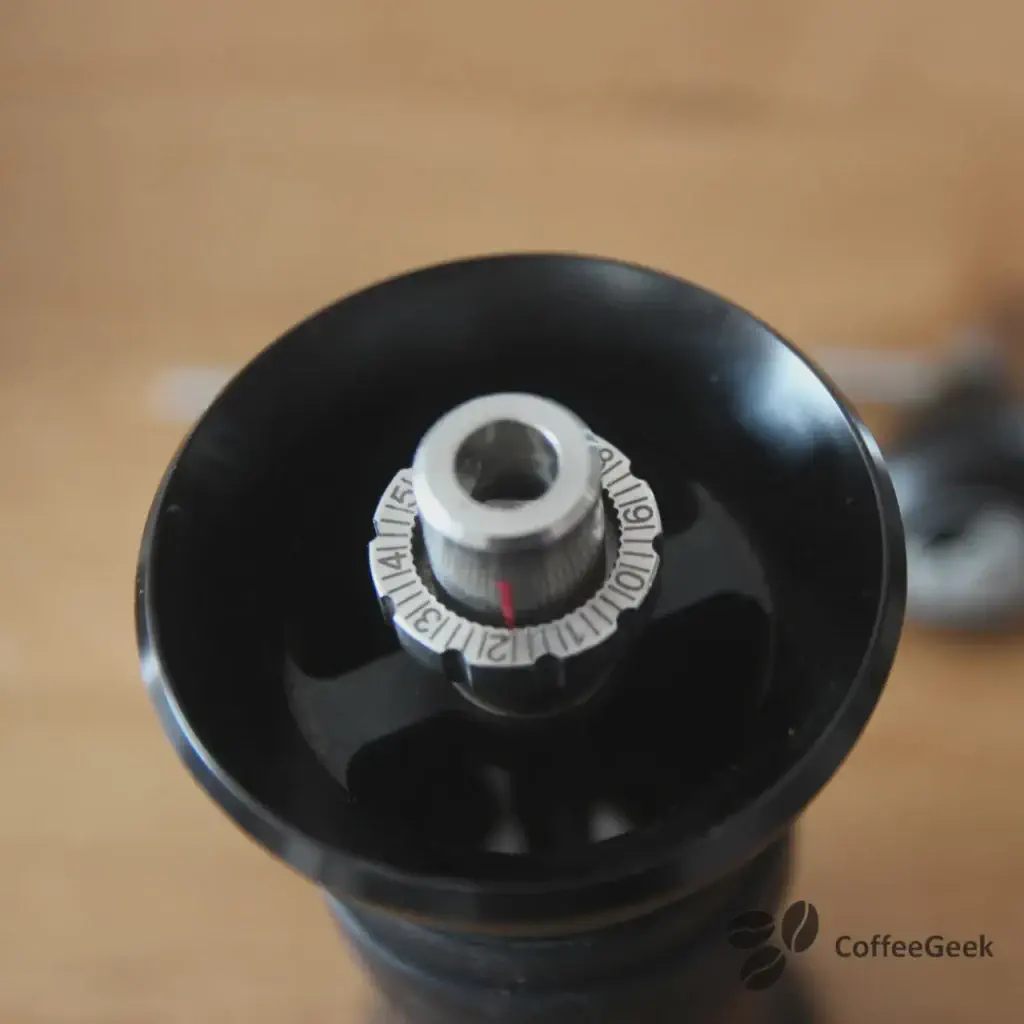
Next, remove the metal element used for adjustment.
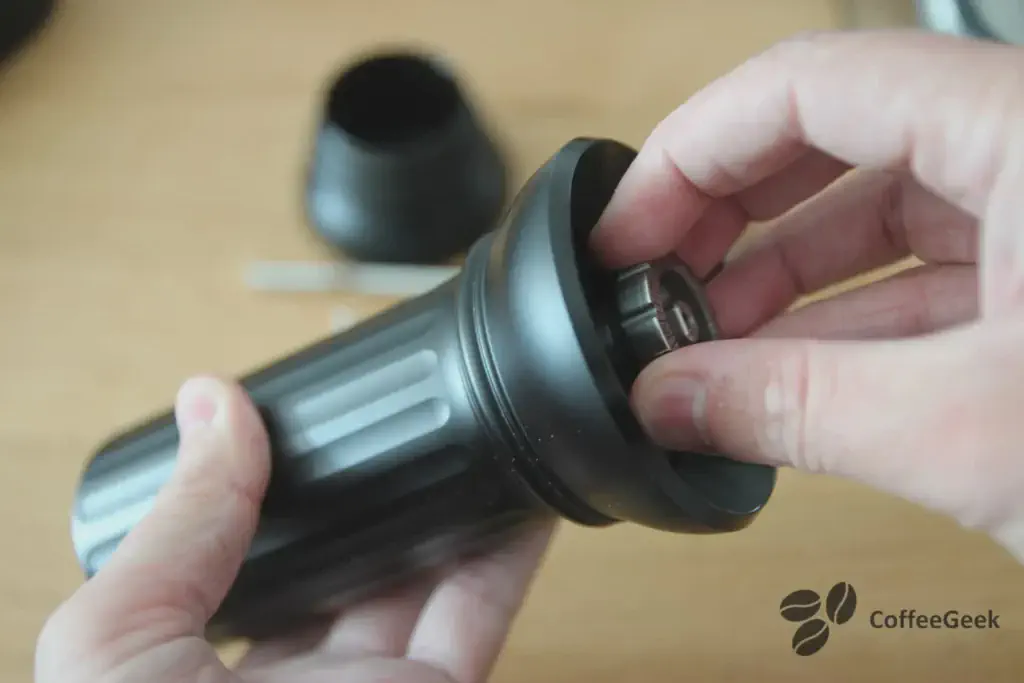
To unscrew the nut containing the adjustment numbers, first remove the container and block the burr with your fingers. Then you can remove the nut.
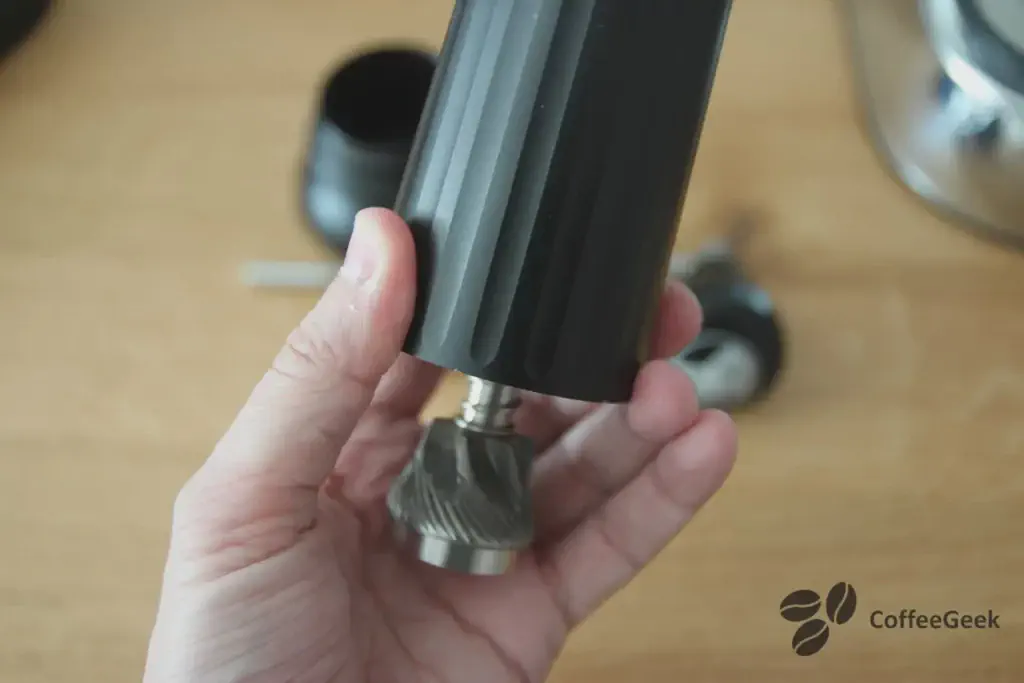
Remove the burr and the central shaft.
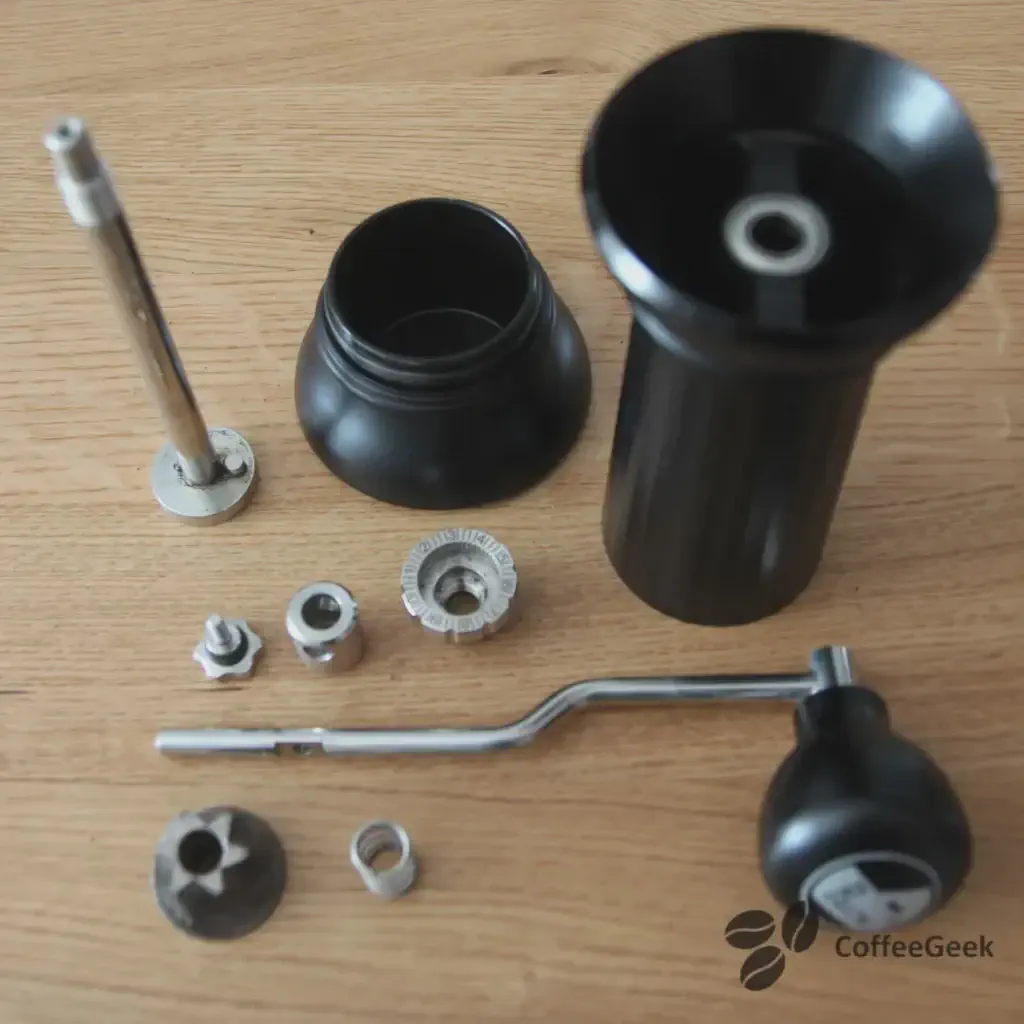
Here is everything that can be disassembled on the Apollo without using tools.
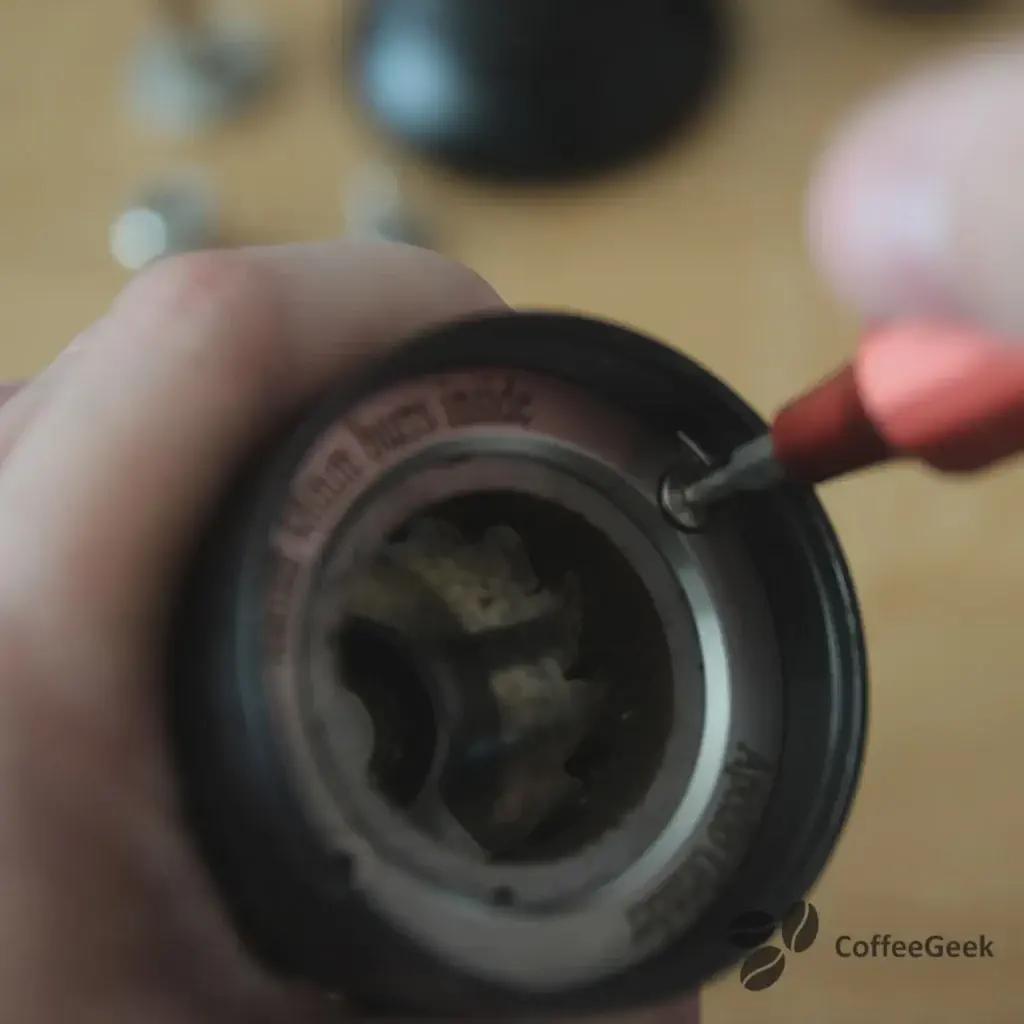
To disassemble the fixed part of the burr, there are two screws to remove. To do this, you will need an Allen key.
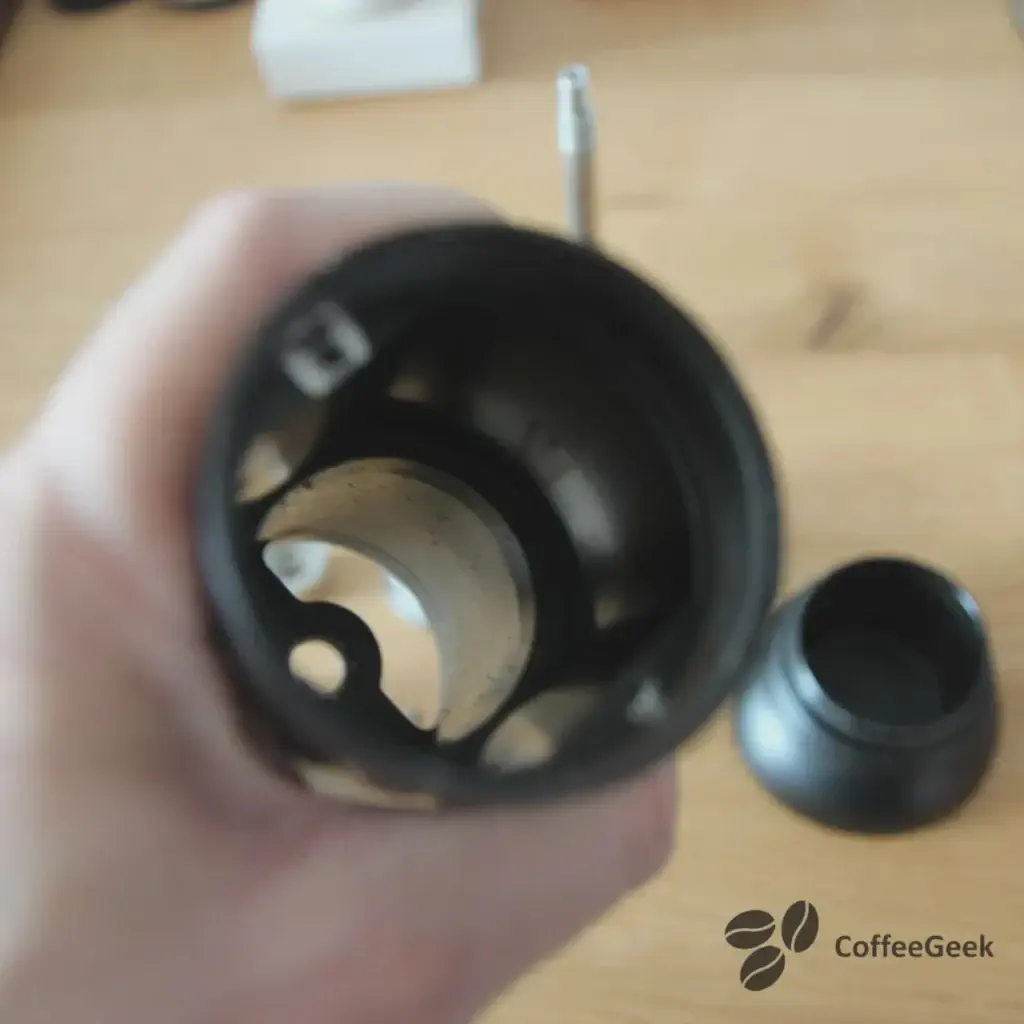
Once the stationary part of the burr is removed, we can easily access the inside of the grinder to clean it.
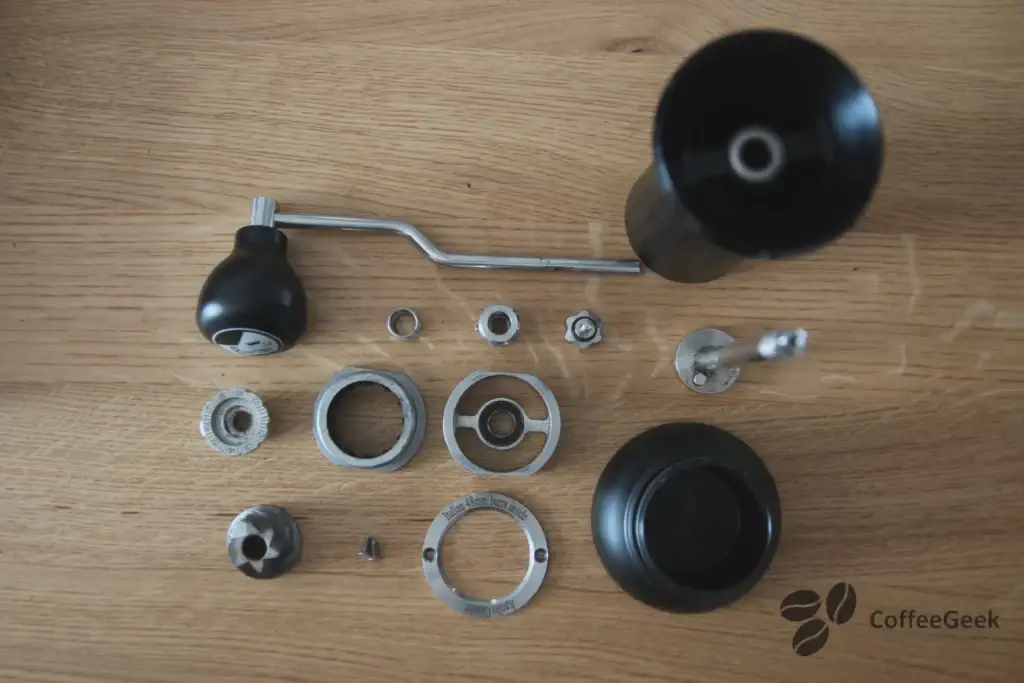
Here is the Apollo fully disassembled.
Conclusion
To conclude, while the market is currently flooded with more and more coffee grinders, does the Apollo still have its place? From my point of view, absolutely. Not only have a few improvements been made to this grinder since I’ve owned it, but it has also been manufactured by an enthusiast who seeks to produce quality rather than quantity. Admittedly, the Apollo may be improvable on certain points, such as the cap which is not attached to the handle as its competitors do. However, when not in use, the Apollo has a design that allows it to be a true decorative object.
At the time of writing, I have owned about ten different manual coffee grinders. I have resold them all, except the Apollo.
Find the Apollo coffee grinder on the manufacturer’s website
As this is a review article, I feel obliged to rate it and give it a score of 4.5/5.
★★★★★
- Quality materials
- Made in one single piece, carved from solid material using a CNC machine
- Paint quality that hasn’t changed over several years
- Fineness of adjustment, fully suitable for espresso
- Features very low retention
- Truly successful overall design
- Burr quality
- Grinding speed
- The cap, somewhat disrupting the design if left on
- The silicone rings for better grip on the grinder during use

